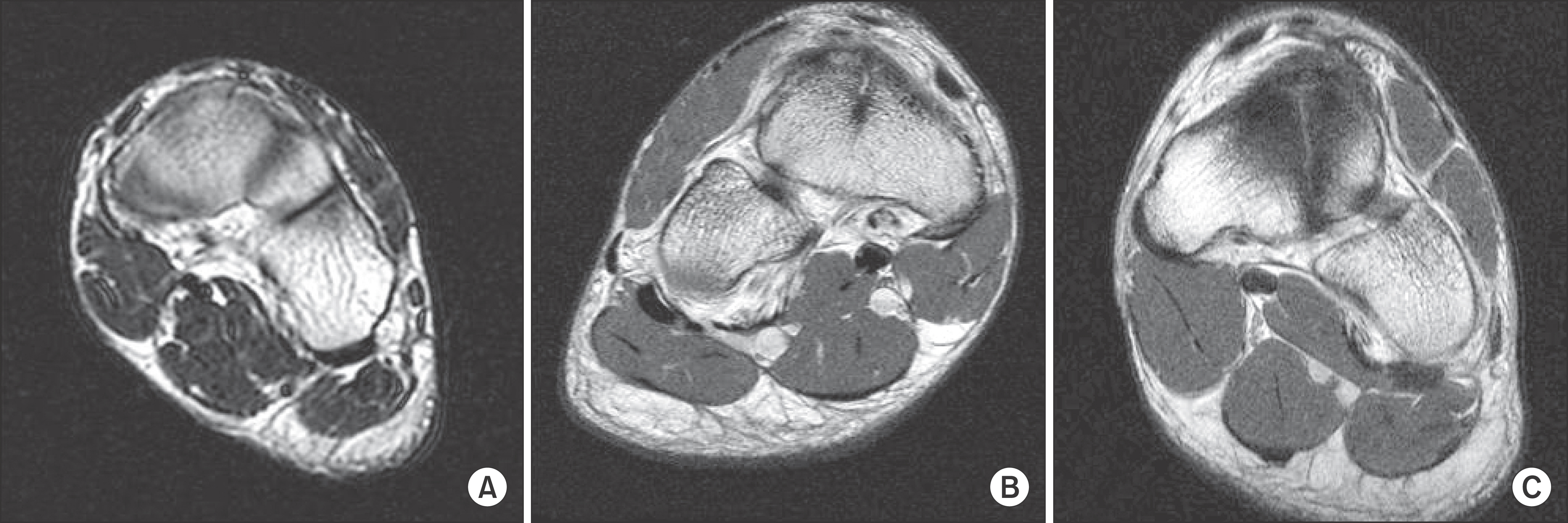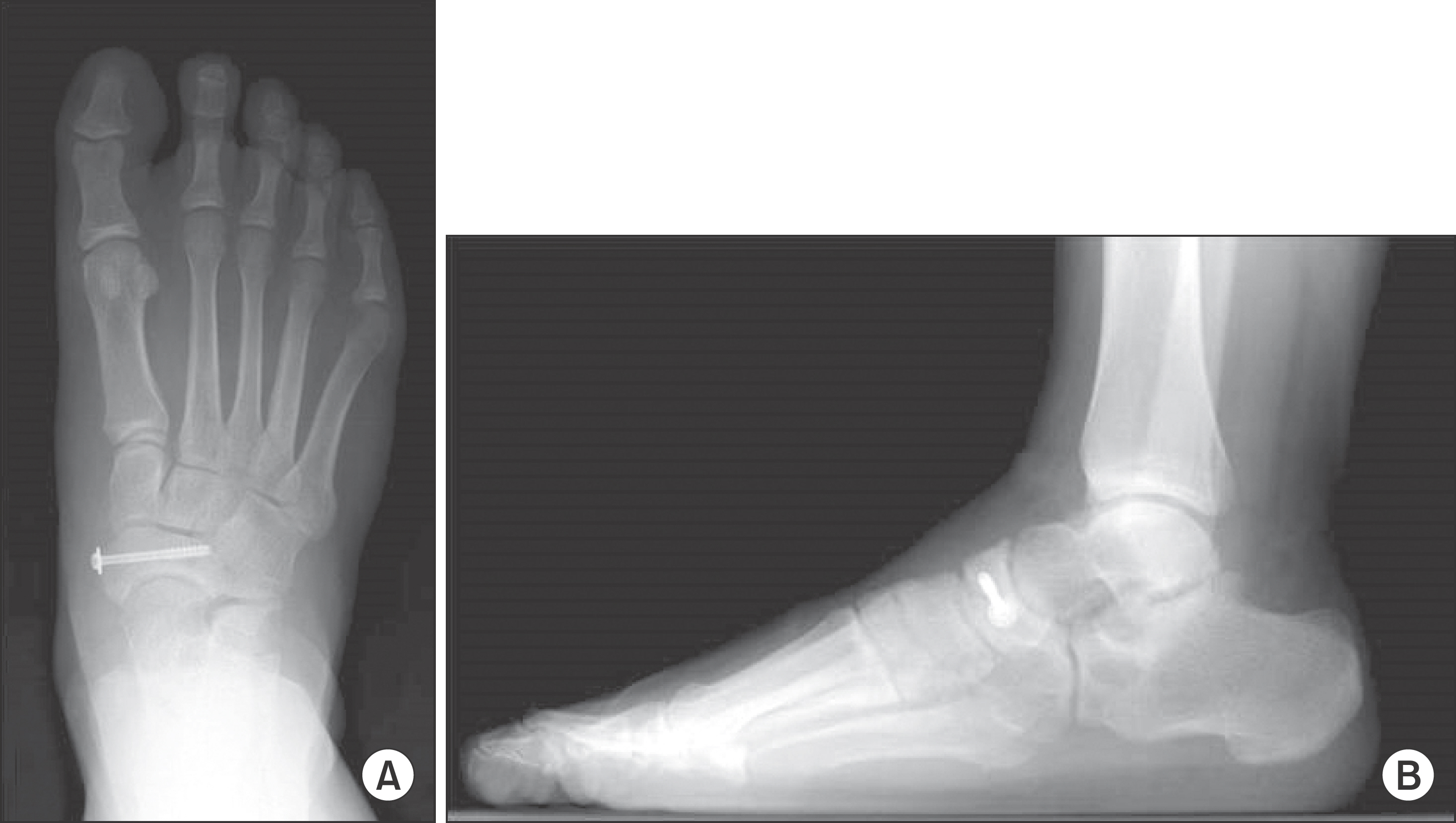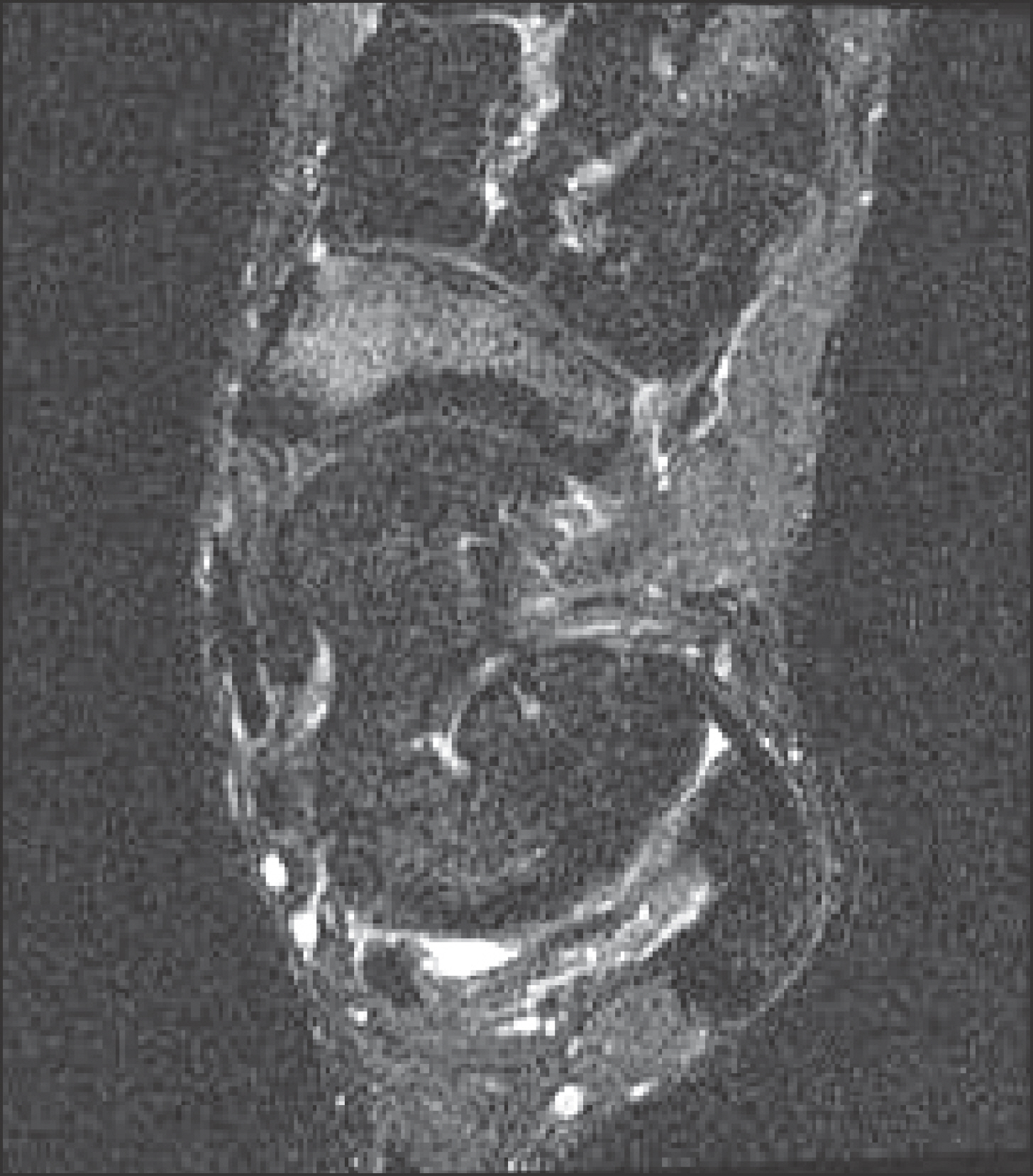J Korean Foot Ankle Soc.
2016 Dec;20(4):170-175. 10.14193/jkfas.2016.20.4.170.
The Operative Management of Navicular Stress Fractures in Adolescence
- Affiliations
-
- 1KT Lee's Orthopaedic Hospital, Seoul, Korea.
- 2Department of Orthopaedic Surgery, Seoul Medical Center, Seoul, Korea. 711000e@naver.com
- 3Department of Orthopaedic Surgery, Eulji General Hospital, Eulji University College of Medicine, Seoul, Korea.
- KMID: 2362765
- DOI: http://doi.org/10.14193/jkfas.2016.20.4.170
Abstract
- PURPOSE
The aim of this study is to evaluate the effectiveness of surgical treatment in adolescent patients suffering from navicular stress fracture.
MATERIALS AND METHODS
A total of 11 adolescent patients aged 14 to 19, who underwent an operation for navicular stress fracture between 2005 and 2008 were recruited. Clinical outcomes were evaluated by the American Orthopaedic Foot and Ankle Society (AOFAS) midfoot score and visual analogue scale (VAS) score.
RESULTS
The mean VAS score before the operation was 7.7. A score of 2.9 was confirmed at final follow up after the operation. The mean final follow-up period was 22.1 months. There was a statistically significant improvement in the VAS score between before and after the operation (p=0.01), and similarly, the AOFAS score also showed an improvement, from 46.5 to 80.7 (p=0.01). The pain that remained after the operation, according to the VAS score, was severe in three patients (27.3%), tolerable in seven patients (63.6%), and free of pain in one patient (9.1%).
CONCLUSION
In navicular stress fracture in adolescents, careful selection of patients who could benefit from surgical treatment is recommended.
Keyword
Figure
Reference
-
1.Towne LC., Blazina ME., Cozen LN. Fatigue fracture of the tarsal navicular. J Bone Joint Surg Am. 1970. 52:376–8.
Article2.Iwamoto J., Takeda T. Stress fractures in athletes: review of 196 cases. J Orthop Sci. 2003. 8:273–8.
Article3.Saxena A., Fullem B., Hannaford D. Results of treatment of 22 navicular stress fractures and a new proposed radiographic classification system. J Foot Ankle Surg. 2000. 39:96–103.
Article4.Khan KM., Brukner PD., Kearney C., Fuller PJ., Bradshaw CJ., Kiss ZS. Tarsal navicular stress fracture in athletes. Sports Med. 1994. 17:65–76.
Article5.Golano P., Fariñas O., Sáenz I. The anatomy of the navicular and periarticular structures. Foot Ankle Clin. 2004. 9:1–23.
Article6.Hulkko A., Orava S., Nikula P. Stress fracture of the fifth metatarsal in athletes. Ann Chir Gynaecol. 1985. 74:233–8.7.Orava S., Hulkko A. Delayed unions and nonunions of stress fractures in athletes. Am J Sports Med. 1988. 16:378–82.
Article8.Bennell KL., Malcolm SA., Thomas SA., Wark JD., Brukner PD. The incidence and distribution of stress fractures in competitive track and field athletes. A twelve-month prospective study. Am J Sports Med. 1996. 24:211–7.9.Brukner P., Bradshaw C., Khan KM., White S., Crossley K. Stress fractures: a review of 180 cases. Clin J Sport Med. 1996. 6:85–9.10.Kiss ZS., Khan KM., Fuller PJ. Stress fractures of the tarsal navicular bone: CT findings in 55 cases. AJR Am J Roentgenol. 1993. 160:111–5.
Article11.Pavlov H., Torg JS., Freiberger RH. Tarsal navicular stress fractures: radiographic evaluation. Radiology. 1983. 148:641–5.
Article12.Fitch KD., Blackwell JB., Gilmour WN. Operation for non-union of stress fracture of the tarsal navicular. J Bone Joint Surg Br. 1989. 71:105–10.
Article13.Torg JS., Moyer J., Gaughan JP., Boden BP. Management of tarsal navicular stress fractures: conservative versus surgical treatment: a meta-analysis. Am J Sports Med. 2010. 38:1048–53.14.Burne SG., Mahoney CM., Forster BB., Koehle MS., Taunton JE., Khan KM. Tarsal navicular stress injury: long-term outcome and clinicoradiological correlation using both computed tomography and magnetic resonance imaging. Am J Sports Med. 2005. 33:1875–81.15.Saxena A., Fullem B. Navicular stress fractures: a prospective study on athletes. Foot Ankle Int. 2006. 27:917–21.
Article16.Torg JS., Pavlov H., Cooley LH., Bryant MH., Arnoczky SP., Bergfeld J, et al. Stress fractures of the tarsal navicular. A retrospective review of twenty-one cases. J Bone Joint Surg Am. 1982. 64:700–12.
Article





